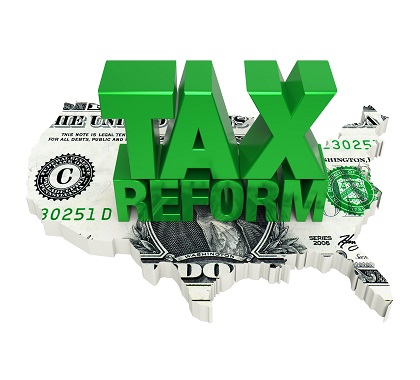Since 2013, North Carolina has been at the forefront of tax reform, lowering tax rates and abandoning a progressive tax system. In 2014, the Tar Heel State became the eighth state to enact a flat tax on personal income. Prior to passing tax reform in 2014, North Carolina had a three-tiered income tax system, with rates set at 7.75 percent, 7 percent, and 6 percent. The initial flat tax rate was 5.8 percent, but has since decreased to 5.5 percent because the state met several revenue triggers.
To preserve these reforms, several proposals have been made in the North Carolina General Assembly to strengthen the state’s constitutional limits on income tax rates. Currently, the state income tax rate limit is 10 percent. Originally, the limit was set at 6 percent, but was increased to 10 percent in 1936. In 2018, North Carolina lawmakers approved an amendment that would set the new limit to 7 percent.
Personal income taxes are generally considered to be one of the most destructive taxes because they disincentivize production, innovation, and risk-taking. Recent studies have shown states with no income tax or with lower income taxes perform better economically and achieve greater job and population growth than those with higher income taxes. High income taxes deter economic development by discouraging higher-income earners and new capital from moving into a state or remaining there. A study by the Americans for Tax Reform Foundation found, “Each positive 1 percentage point tax burden differential between states decreases the ratio of income migration into the high-tax state by 6.78 percent in a given year.”
The original version of the North Carolina tax cap amendment bill, which was approved by the North Carolina Senate in 2017, included an income tax cap of 5.5 percent, matching the current rate and effectively ending any future income tax hikes. Unfortunately, this version of the cap could not muster enough votes to pass. However, a modified version with a cap of 7 percent eventually passed.
Over the past decade, several states have considered similar tax caps. In 2014, Georgia voters approved an amendment that effectively capped that state’s income tax rate at 6 percent. In Tennessee, voters went even further, giving approval for an amendment prohibiting an income tax in the Volunteer State.
Although the North Carolina amendment would reduce the current cap from 10 percent to 7 percent, it would not have the same effect as limiting the cap to the current tax rate of 5.5 percent. Ray Nothstine of the Civitas Institute argues despite the changes, the new cap still represents a positive reform for the state’s income tax system. “It’s a great idea to reinforce lower taxes in our state constitution and to remind people that government can – and should – only do so much. While 7 percent was not the ideal number, it’s a step forward instead of a step back. By limiting taxes we place limits on government, powerfully reminding our representatives in North Carolina that their sphere is limited and our power over them is not,” Nothstine wrote in 2018.
At the very least, the proposed cap would prevent the state from backsliding and undoing its recent tax reforms. Before the Tar Heel State reformed its tax laws in 2013, its tax code was among the bottom 10 on the Tax Foundation’s State Business Tax Climate Index, ranking 46th in 2011, 45th in 2012, and 44th in 2013. After years of positive reforms, North Carolina has risen to 11th. North Carolina is a national leader in tax reform, so states should follow the Tar Heel State’s lead and implement income tax caps to restrain state spending and encourage economic growth.
The following articles examine income tax reform in greater detail.
Myths About the Tax Cap Amendment
https://www.nccivitas.org/civitas-review/myths-tax-cap-amendment/
Brian Balfour of the Civitas Institute examines the tax cap amendment proposal and several myths being used by critics to oppose it.
Why the Lower Tax Cap Amendment Is Good for North Carolina
https://www.nccivitas.org/2018/lower-tax-cap-amendment-good-north-carolina/
Ray Nothstine of the Civitas Center discusses how a lowered cap on income taxes would be a positive reform for North Carolina.
Help from Our Friends: What States Can Learn from Tax Reform Experiences Across the Country
https://taxfoundation.org/state-tax-reform-lessons-2018/
Nicole Kaeding and Jeremy Horpedahl of the Tax Foundation examines several examples of successful tax reform in states like Indiana, North Carolina, and Utah, and discusses how other states could follow their successful reform models.
Policy Tip Sheet: Spending Reforms
https://heartland.org/publications-resources/publications/policy-tip-sheet–spending-reforms
The Heartland Institute outlines several reforms state legislators can take to address spending problems, including privatization, tax and expenditure limits, and retirement reforms.
Ten Principles of State Fiscal Policy
http://heartland.org/policy-documents/ten-principles-state-fiscal-policy
The Heartland Institute provides policymakers and civic and business leaders a highly condensed, easy-to-read guide to state fiscal policy principles. The principles range from “Above all else: Keep taxes low” to “Protect state employees from politics.”
Tip Sheet: State Income Tax Reform
http://heartland.org/policy-documents/tip-sheet-state-income-tax-reform
This Policy Tip Sheet from The Heartland Institute examines state income taxes, documents economists’ judgment of them as the most destructive tax and a deterrent to economic development, and provides data showing states with no income tax perform better economically and enjoy greater job and population growth than those with higher taxes.
Rich States, Poor States
https://www.alec.org/publication/rich-states-poor-states-11th-edition/
The eleventh edition of this publication from the American Legislative Exchange Council and authors Laffer, Moore, and Williams offers both individual-state and comparative accounts of the negative effects of income taxes.
Tax and Expenditure Limits for Long-Run Fiscal Stability
https://heartland.org/publications-resources/publications/tax-and-expenditure-limits-for-long-run-fiscal-stability
Emily Washington and Frederic Sautet of the Mercatus Center examine how states can correct for the inflexibility inherent in state expenditure systems to respect taxpayers’ desires for government services over time. Although they are not a perfect solution, binding TELs prevent policymakers from increasing state spending beyond voters’ willingness to pay for government services, the authors argue.
What Is the Evidence on Taxes and Growth?
https://heartland.org/publications-resources/publications/what-is-the-evidence-on-taxes-and-growth
In this Tax Foundation study, William McBride examines the effects of tax policy on economic growth. He finds the literature on the topic demonstrates long-term economic growth is to a significant degree a function of tax policy. If governments seek to spur investment, he writes, they should lower taxes on the earnings of capital. If they seek to increase employment, they should lower taxes on workers and the businesses which hire them. The report also includes a discussion of the effects of progressive tax systems.
Nothing in this Research & Commentary is intended to influence the passage of legislation, and it does not necessarily represent the views of The Heartland Institute. For further information on this and other topics, visit the Budget & Tax News website, The Heartland Institute’s website, and PolicyBot, Heartland’s free online research database.
The Heartland Institute can send an expert to your state to testify or brief your caucus; host an event in your state, or send you further information on a topic. Please don’t hesitate to contact us if we can be of assistance! If you have any questions or comments, contact Lindsey Stroud, a Heartland Institute state government relations manager, at [email protected] or 312/377-4000.




